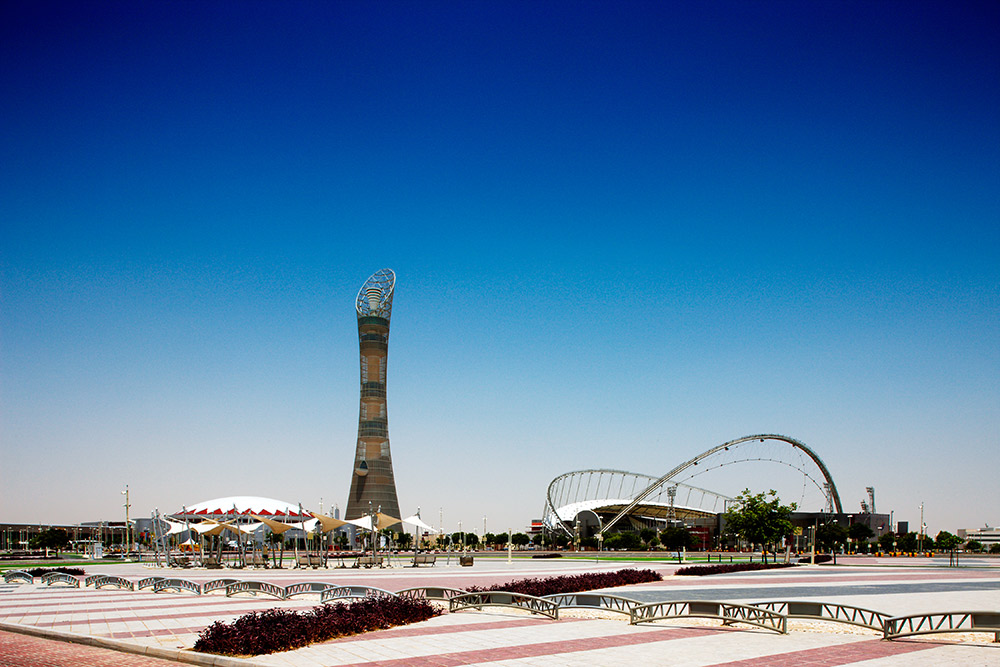With the world’s highest GDP per capita and the largest Liquefied Natural Gas (LNG) exporter with the world’s largest gas deposits and a small population, Qatar surely has everything going in its favour. For now. And the booster shots for its further growth has come in the form of the FIFA 2022 World Cup, the IAAF World Athletics Championship 2019 events and the Qatar National Vision 2030 (QNV). Giorgios Retsinas writes
With these developments, the economy can definitely hope for big time contribution from the real estate and construction sector, and according to Jones Lang Lasalle – Middle East and North Africa (MENA), the sector is expected to continue playing a major role in the local economy. According to the agency, the introduction of ambitious projects such as Lusail, The Pearl, Energy City, Qatar Financial Centre and Education City is expected to support growth in the real estate sector, although projects may be slowed due to certain ‘global financial and other circumstances’.
By 2021, the value of the construction industry is forecast to almost double to $15 billion per annum in real terms. MEED (Middle East Economic Digest), which is a 54-year-old business intelligence tool for the MENA estimates the total value of projects planned or underway in Qatar at USD 222bn. And ahead of the 2022 FIFA World Cup, and in line with the country’s 2030 Vision, Qatar’s infrastructure spend is expected to reach US$150bn.
“Successful delivery of the World Cup will require the Qatari government to complete the infrastructure development promised to FIFA. This will also help Qatar to meet the targets it has set itself in the QNV. Creating a world-class infrastructure in Qatar will ensure the continued success of the country’s powerhouse economy,” states Mounif Kilani, Economic & Commercial Counsellor, Kuwait in his report on Building and Construction Sector in Qatar.
Commercial construction accounts for 23% of total construction spend and Transport construction accounts for 58% of total construction spend. According to Kilani, the main trends in the construction sector remain to develop Qatar’s transport infrastructure, create a modern residential and hospitality environment to support the predicted increase in population and to create a range of world class sporting venues.
The country’s banking strength has also matured. As elaborated in a report by Oryx Business Intelligence, the Qatar Investment Authority (QIA) had input US$ 2.8 billion of capital into the banking system in three tranches between 2009 and 2011 to help the domestic banks during the global crisis. The report states that as a result, the capital adequacy ratio (CAR) of the banking sector increased to 20.6 percent by end 2011. A well-capitalized banking sector enables the industry to access credit at competitive rates, thus driving the economy. The sector also remains resilient in the event of a downturn.
Qatar issued a record budget of $62 billion (QR225.7 billion) For the 2014-2015 fiscal year, up 3.5% from last year and accordingly, the largest-ever for the country. The first
budget plan passed by the Emir contains three main pillars: infrastructure and transport, education and the public health system.
Actually, $182.5 billion worth of projects (QR664 billion) are anticipated to be implemented in Qatar during the next five years. The large allocations for development projects will open the door to investors, noting that the adoption of a budget of this magnitude will spur the Qatari economy to diversify its income sources in order to create a dynamic economy.
Oryx Business Intelligence identified possible threats to. It indicates that Iran continuing its nuclear programme remains a strong threat to the stability of the Qatar. It says, ‘With the potential to trigger a Gulf conflict is something that GCC leaders must guard against. Also, bilateral relations between Qatar and Iran are likely to deteriorate if Qatar continues with its stance on the Syrian conflict.’
Another issue pointed out by a report from EC Harris states that a key constraint will be both the capacity and the capability of the existing supply chain. The report states, ‘Although many of the existing Qatar construction firms are currently reporting spare capacity in their order books, this will not be sufficient for the volume of construction that is forecast. This provides an opportunity for local companies and international contractors to combine their skills to deliver these complex and technically challenging projects. Increasing numbers of large international contractors are already looking to enter the market, including significant players from the Far East. Presently there is approximately 30% spare capacity in the Qatar construction market, and a similar amount
in the wider GCC markets. With output expected to grow by 12%+ per annum, it is anticipated that the increase in the construction supply chain will need to ramp up quickly.’
According to EC Harris, the fast paced development over a relatively short period of time does have risks, with a boom in construction inflation and an overheated market. But it concludes that the good news is there is time to mitigate this risk by undertaking a proactive approach to the problems. ‘By acting now, Qatar will continue on its trajectory to become a country with world class infrastructure for many generations to come whilst also enjoying its time in the global spotlight when the 2022 FIFA World Cup comes to town,’ it states.




